Evolution Of Windows OS
Windows Operating System was launched in 1985 by Microsoft and since then it has been the most popular and user friendly operating system. It was the first Graphical User Interface operating system launched by Microsoft for IBM compatible PCs which were using MS-DOS. Soon the Windows OS started to dominate the operating system market by overtaking its competitor Mac OS which was launched in 1984. The main advantage of Windows OS is that it is user-friendly. It created a certain type of revolution in desktop computers allowing an average user access the PC without any complexities. Windows OS provided handful of productive tools such as Microsoft Office that have made computers very useful. The first Windows launched in 1985 was Windows 1.0. Later many versions were released such as Windows XP, Windows Vista, Windows 7 and the latest sensational version is Windows 8.
Let us go through the various versions of Windows Operating System……
Windows 1.0.
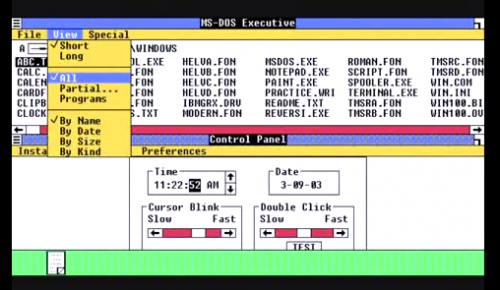
Officially unveiled on November 20 1985, Windows 1.0 was a 16 bit operating system that required less than 1 MB of memory. Though Windows 1.0 achieved little popularity, it marked the start of a prodigious era. The commands of MS-DOS were replaced by GUI where the user just needs to move the cursor and click his way through multiple screens. Windows 1.0 came out with the number of task simplifying features such as drop-down menus, dialog boxes, scroll bars and icons. This version of OS included several programs such as Calculator, Notepad, MS-DOS File Management etc.
Minimum requirements for Windows 1.0 are 256 KBs, two double-sided floppy disk drives and a graphics adapter card.
Windows 2.0
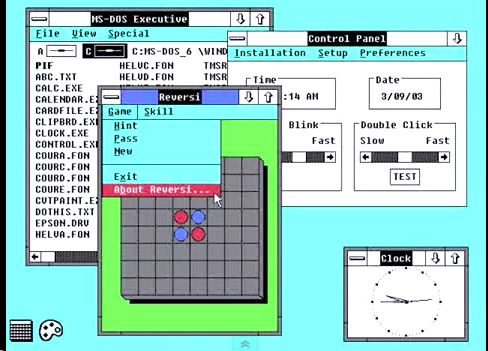
The next version of Windows OS – Windows 2.0- was launched on December 9 1987. This was also a 16 bit OS with desktop icons and expanded memory. Taking the advantage of expanded memory capabilities of Intel 386 processor Windows/386 was supplemented to Windows 2.0. This version mainly focused on speed and graphics support. It allowed the user to use keyboard shortcuts, control screen layout etc.
The highlight of this version is that Control Panel made its debut in this version.
Windows 3.0
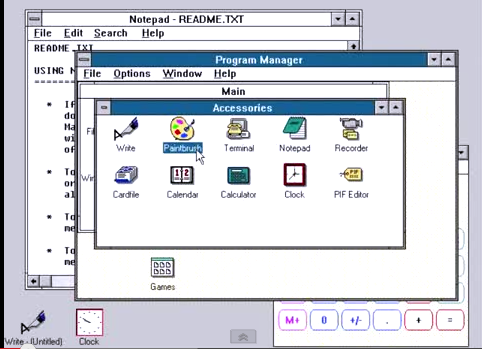
Windows 3.0 was launched on May 22 1990 and soon this version became popular. This version came out with a lot of enhanced features including improved icons. This Windows was faster and supported advanced graphics with 16 colors.
Soon Windows 3.0 was succeeded by Windows 3.1 which was launched in 1992. Microsoft sold 10 million copies of these versions together. With the success of these versions, Windows started to make a mark in Operating Systems field.
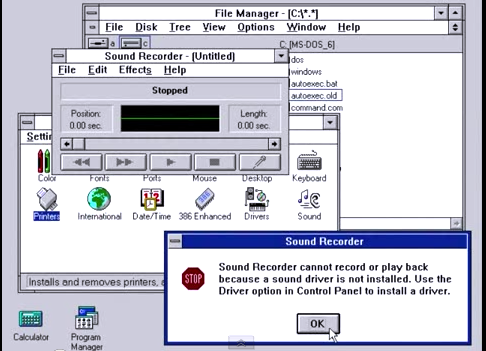
WINDOWS 3.1
Different Managers like Program Manager, File Manager and Print Manager were included in Windows 3.0. The launch of Windows Software Development Kit, which allowed the developers to focus more on writing programs and less on writing device drivers, also helped a bit in gaining popularity.
Late in 1992 Windows for Workgroups 3.11 was released which featured native networking support. Thus for the first time, computers became the part of client/server computing.
Windows NT
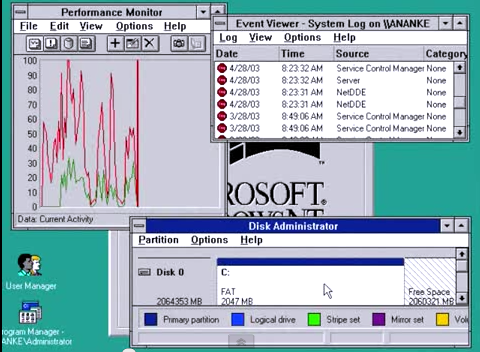
Windows NT, which supports advanced engineering and scientific programs, was launched on July 27 1993. The release of Windows NT also brought the curtains down on the Microsoft’s project of developing a new advanced operating system that began in late 1980’s.
“Windows NT represents nothing less than a fundamental change in the way that companies can address their business computing requirements,” Bill Gates says at the time of its release.
Windows NT 3.1 is a 32 bit operating system unlike its previous versions.
Windows 95
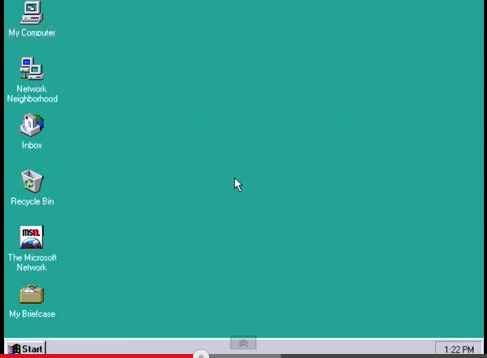
Windows 95 was the more enhanced version of Windows compared to all the preceding versions. This was launched on August 24 1995 and within five weeks of its release, 7 million copies of Windows 95 were sold. Windows 95 was publicized highly and with the availability of features like built-in internet support, dial-up networking, new plug and play capabilities, the product lived up to its pre-release hype.
Like Windows NT, Windows 95 is also a 32 bit operating system which provides enhanced multimedia capabilities, high end features for mobile computing and integrated networking.
Minimum requirements for Windows 95: PC with a 386DX or higher processor and at least 4 MB of RAM.
The stand out features of this version are- Start Menu, Taskbar, Maximize, Minimize and Close Button appeared for the first time.
During 1990s when the Internet was peaking gradually, the first version of Internet Explorer was launched
Windows 98
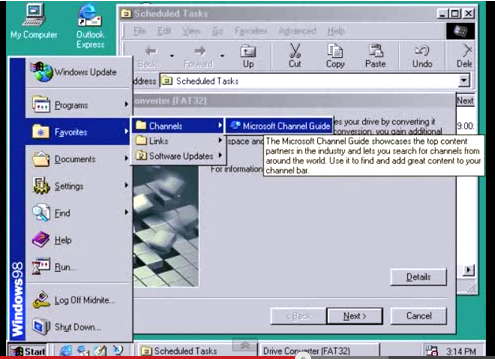
Windows 98 was specifically designed for consumers as the number of PC users at home and at work were on surge. Windows 98, which was launched on June 25 1998, was more faster, more steadier and had the ability to open and close programs quickly. Support for reading DVD disc and USBs was added in this edition of Windows. And also “Quick Launch” feature was introduced.
Windows Millennium Edition(Windows Me)
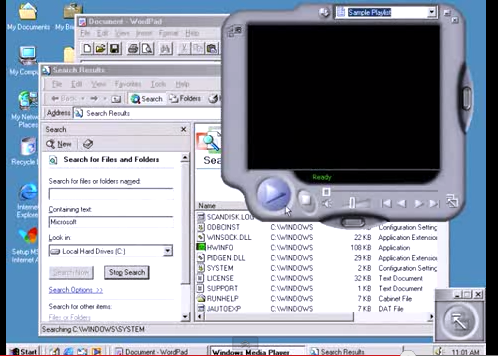
In between Windows 98 and Windows 2000, Windows Me was launched. In this version, System Restore was introduced for the first time. This important feature enabled the user to roll back the PC to last know good configuration before a problem occurred. Movie Maker tool and Microsoft Windows Media Player was also introduced for the first time.
Windows Me happened to be the last operating system to be based on Windows 95 code.
Windows 2000
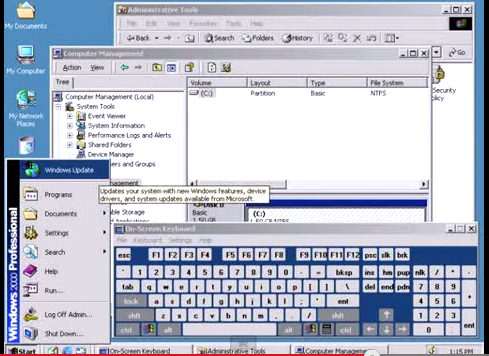
Windows 2000 Professional version was designed with an intention to replace all the previous versions on all business desktops. Windows 2000 was based on Windows NT 4.0 Workstation Code and it came out with a large number of improvements in reliability, internet capability, support for mobile computing, support for advanced networking and wireless products, USB devices, IEEE 1394 devices etc.
Windows XP
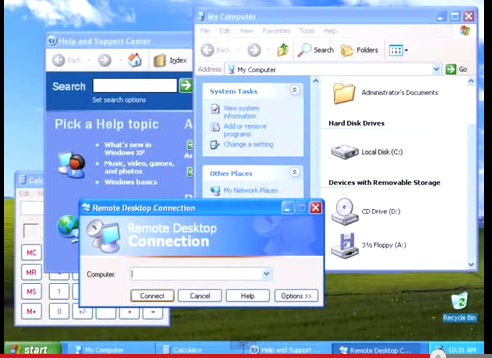
Windows XP, one of the best-selling products ever in the history of Microsoft, was launched on October 25 2001 in 25 languages. The layout and the look of the Windows were redesigned to improve the usability. Accessing different screens, Handling the Control Panel, Start Menu, Taskbar became more spontaneous. Much focus was put on security updates in this edition to counter the virus and hackers attacks. Windows XP also provided Help and Support feature.
Basically, Windows XP has two editions- Windows XP Home and Windows XP Professional with the former designed for home use and the latter provides key features for business and advanced home computing.
FACT: Windows XP is compiled from 45 million lines of code.
Windows Vista
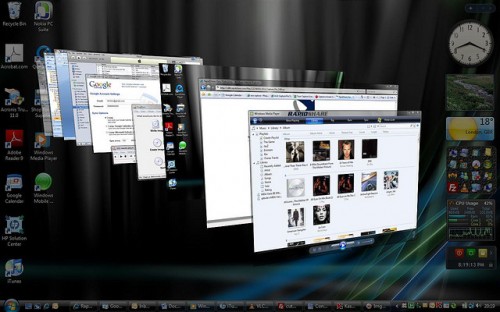
The most secured Operating System- Windows Vista – was launched in 2006 in 35 languages. User Account Control, BitLocker Drive Encryption were provided to protect the system data. Enhancements were made to the Windows Media Player as digital media became the center of attraction. The taskbar and Start button got a brand new look in this edition.
Windows 7
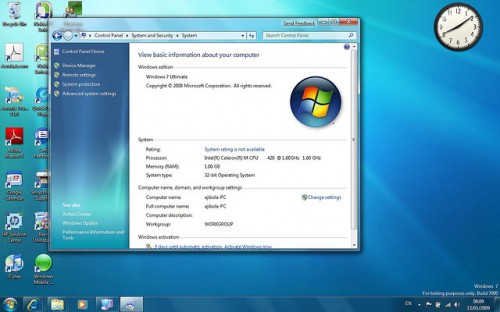
Windows 7(code named as Blackcomb) was an incremental upgrade to Windows Vista and it was build mainly for the wireless devices such as laptops which started to overtake the desktops. The interface with the introduction of live thumbnail previews was simple and interesting to use. Windows Touch was also introduced with this version. Windows 7 is available in mainly 6 editions- Starter, Home Basic, Home Premium, Professional, Enterprise and Ultimate.
Windows 8
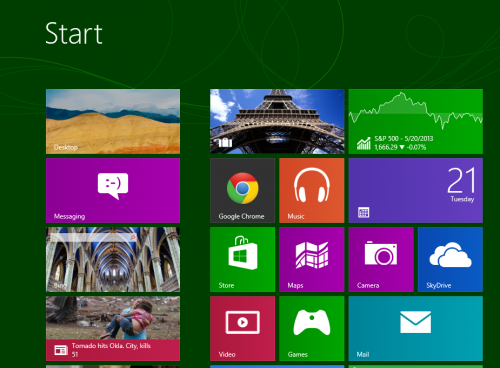
Windows 8 is the latest version of Windows from Microsoft which was launched for Tablets, Laptops and PCs. This version is completely different from the previous versions. The interface is completely redesigned and the Live Tiles were introduced which provided the rich viewing experience for the user. One thing to be noticed in this version is that the Start button was not included. The extraordinary features in this version are- Start screen which contains tiles that are used to access apps and files and also Windows Store – to download new apps and games – was introduced.
Along with Windows 8, Windows RT was launched for Tablets and PCs. It was designed to run the apps exclusively from Windows Store.
Windows 8 is still finding its feet in various fields.
Also Read: Evolution of Facebook
 Spinfold VisualDictionary-Evolutree- Technorip-Amazing Facts and much more.
Spinfold VisualDictionary-Evolutree- Technorip-Amazing Facts and much more.





